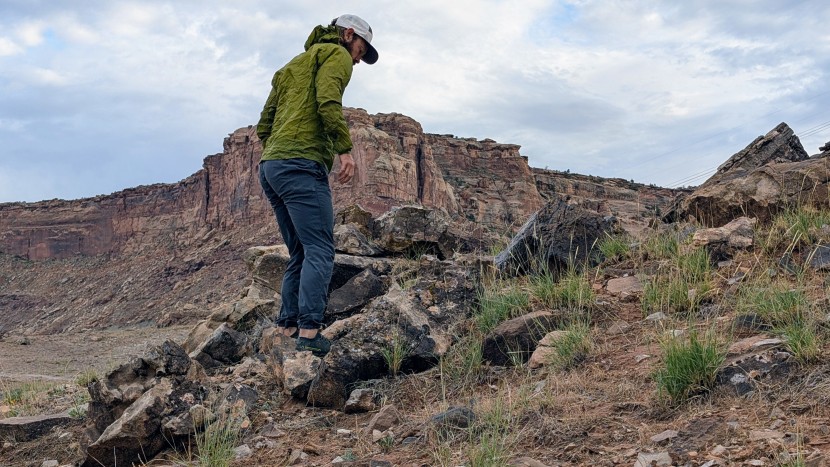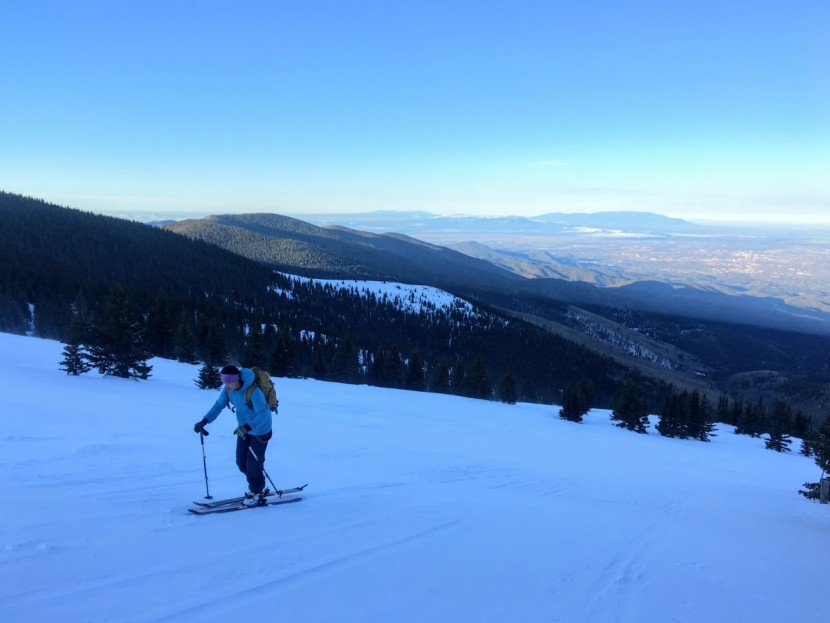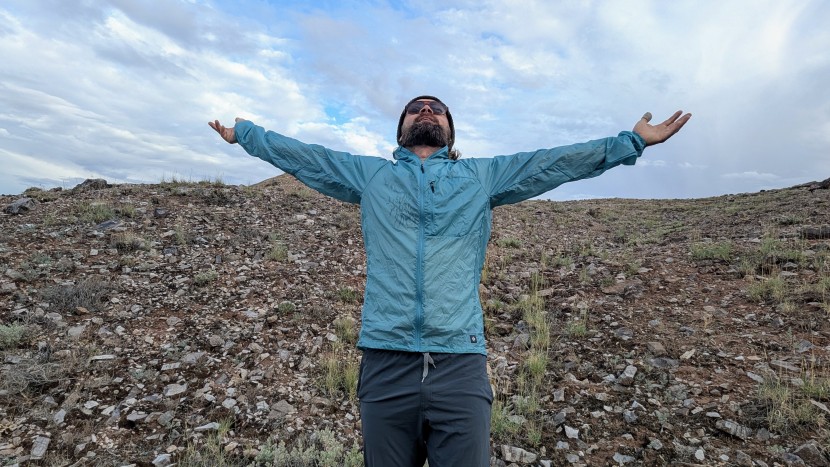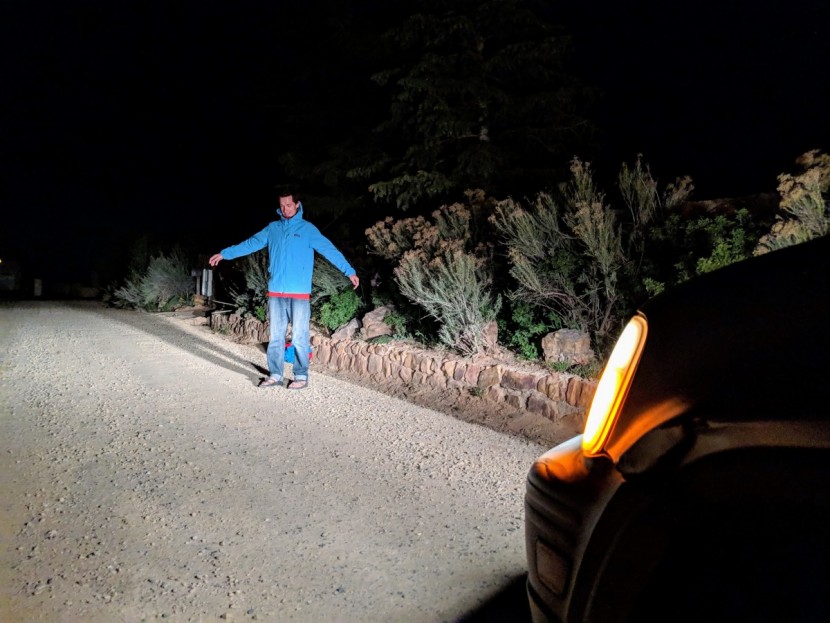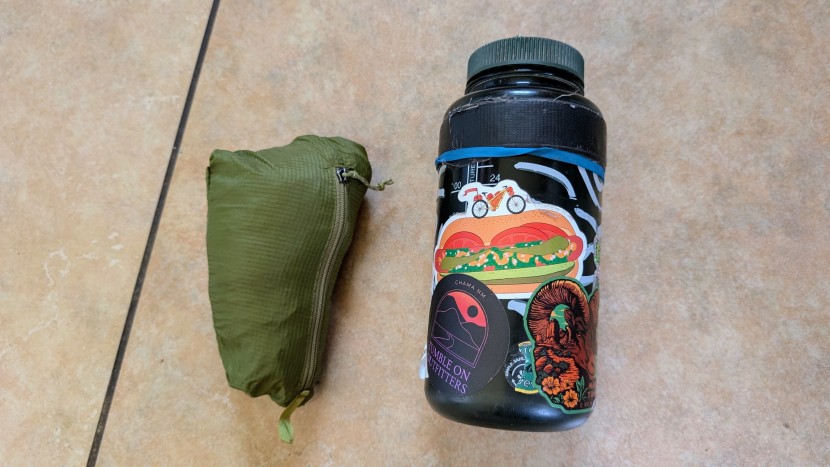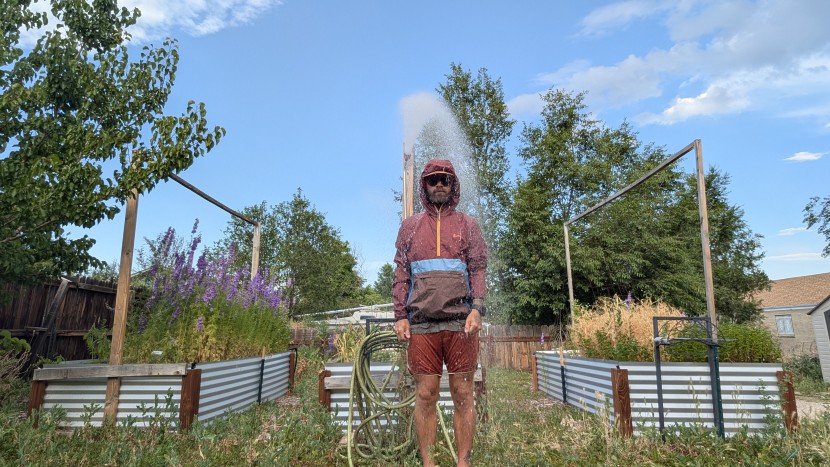We bought the most popular and best-selling windbreakers from leading manufacturers, and then tested them head-to-head through all four seasons in the mountains of Colorado, Utah, and New Mexico. We selected models that represent all of the different genres of windbreakers available to the buyer today, from ultra-lightweight to insulated to water-resistant and durable.
Wind Resistance
We tested wind resistance by wearing these jackets in everything from slightly breezy bikerides around town, to high alpine missions where wind was whipping up the cliff face. At home, we tested in a more controlled environment by placing each jacket in front of a fan and setting it to its highest level. In both cases, we felt for air passing through the fabric, every zipper, and other potential weak points in wind resistance. We also tested to see how tightly the hood cinched down on our heads and felt for air passing into the hood.
Breathability
To test breathability, we wore each jacket outside on a warm day and headed out on a trail run where we knew we would work up a sweat. We then analyzed which felt the hottest, which built up the most sweat inside, and which left us feeling clammy and damp at the end of our run.
Versatility
We wore each windbreaker in as many different settings as possible and assessed how well they performed over a wider variety of activities, from high-alpine adventures to walking with the dog and drinks on a patio in town. We also took stock of how each jacket layered on top of various base layers, midlayers, sweaters, and puffy jackets. We checked our pockets, hoods, and overall style.
Packability
As a first step, we weighed each jacket as soon as it arrived on our doorstep. We then packed each jacket as intended, whether in a stuff sack, stuffed into its own pocket, or folded (crammed really) into a backpack. Based on a product's ease of packing, we granted bonus points or subtracted points. We compared the size of every packed jacket to a 32-oz Nalgene bottle to give us a standard comparison.
Water Resistance
We wore these jackets in light precipitation during our in-use testing, but rain isn't all that common in our testing grounds of Utah, New Mexico, and Colorado. We supplemented testing for each jacket's water resistance using a garden hose and sprinkler to simulate heavy rain. We put on every jacket, with the hood cinched tightly, and stood under a heavy stream of water for 30 seconds. We assessed how well each jacket kept us dry by examining our undershirts, and felt for dampness in high-exposure areas of the jacket, like the shoulders, chest, and hood.

